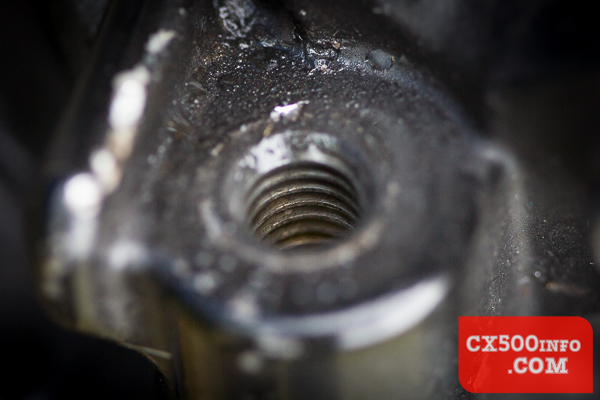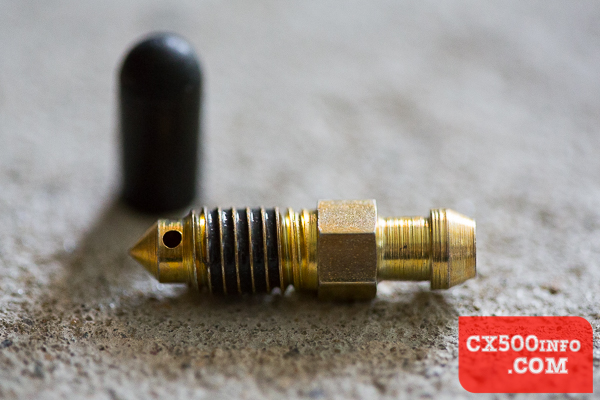How does a brake bleed nipple or valve work anyway?
In a nutshell;
Grabbing your brake lever applies force to the hydraulic fluid in your brake lines, which doesn’t compress significantly and transfers this force through the fluid – exerting force on the moving parts at the other end of the line, e.g. your brake pistons and thus pads. Air is much more compressible than hydraulic fluid, meaning that your lever pressure goes more towards compressing it rather than applying the force directly to the pistons. Air is lighter than hydraulic fluid and will rise to the top of the brake caliper, where you can bleed it out bit by bit until there’s no more air left in your brake system, leaving (ideally) only hydraulic fluid.

As you might expect, the bleed screw sits at the top of the caliper where the air is going to rise to. There’s a hole in the top where you attach a clear hose so you can observe the fluid/air coming out, and a hex section for screwing it in and out with a spanner. The caliper has a threaded hole for screwing it into:

So, what prevents the brake fluid from simply flowing out the hole in the top of the screw when pressure is applied?

Here we can see a new replacement bleeder screw, with threadlocker on the threads (the darker section) and a noticeable lack of rust and corrosion! The hole near the bottom of the screw – to the left in this photo – runs all the way to the top, but as you will notice it is not at the very bottom of the screw. As you screw it in as far as it goes the pointed bottom end seats into a matching recess inside the caliper, creating a seal and preventing the fluid from reaching the hole.
The bleeding process basically involves applying brake pressure, slightly loosening the screw – about 1/4 of a turn – to raise the end of the screw and allow air and fluid to flow into the hole at the bottom, through the screw and out the hole at the top. The screw is then tightened again and the brake lever released, drawing in more fluid from the reservoir and the process repeated until there is no more air left in the system.
Simple but very effective!